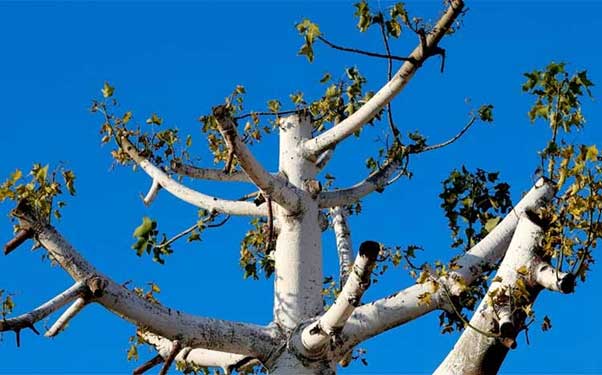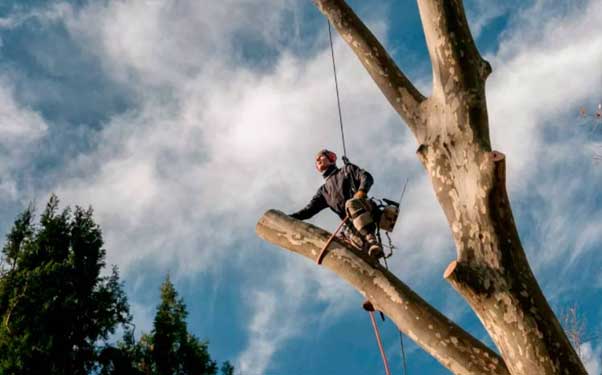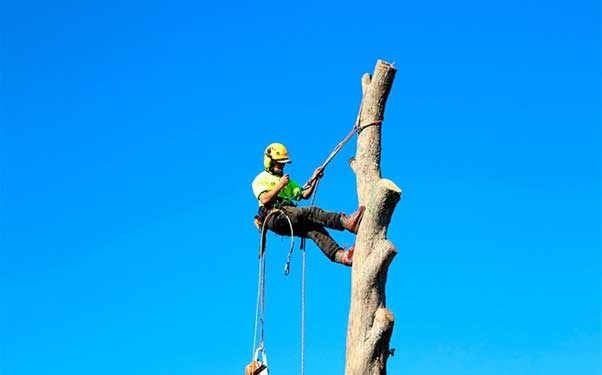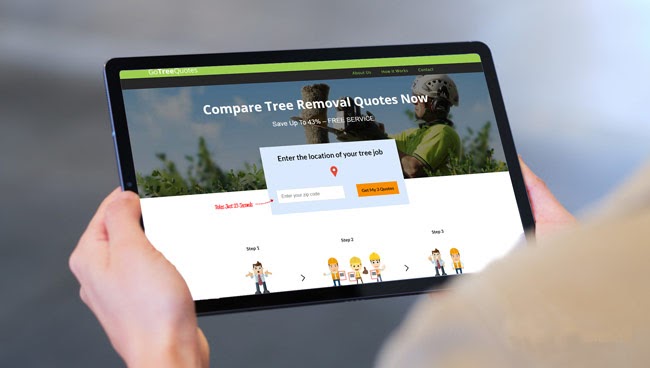Trees are often victims of severe storms. In their wake, trees usually end up with torn branches, stripped barks, shredded foliage, and in extreme cases, broken-off tops. In such cases, it is natural to wonder whether it is possible for the affected trees to recover from the trauma inflicted by severe storms. This is so especially when the damage is as severe as a tree’s top getting broken.
Yes, a tree with a broken-off top can be saved. This is because, in the right environment, such trees can quickly develop water sprouts that help them cope with the extreme loss of foliage. With time, the tree can eventually heal, develop branches, and even end up thriving. However, whether the tree can be saved1 depends on the type of tree, the care it gets, and whether it can avoid developing a rotting or pest problem.
Here is what you should know about damaged trees and whether they can be saved.
Will a tree die if the top breaks off?
Just because a tree’s top breaks off does not mean that it will necessarily die. In some cases, the tree can develop quick shoots and leaves to compensate for the loss of food-producing foliage. It can also develop deeper roots at a fast enough rate to help provide enough nutrients so as to boost its odds of recovery. And with the proper care, such a tree can develop new leaves, branches, and even a flourishing crown.
However, in most cases, such trees die off. The trauma of losing its food-producing parts — leaves — and the eventual exposure to rotting and pest attacks often prove to be too much to overcome. For such trees, removing them is usually the best option.
It is important to note that the difference between the trees that can come back from this extreme trauma and those that don’t, largely depends on the type of tree. The conditions under which it has to recover, and the protection it receives as far as its wounds are concerned, are things that also play a role in determining its chances of undergoing a successful recovery.

Will the top grow back?
Yes, the top of the tree can grow back if the tree has the proper care, nutrition, and care. With these things, the tree can quickly develop shoots to compensate for the loss of the top. It will eventually develop branches — although these tend to be thinner and weaker — and the top will eventually come back to life. With some tree species, the top can grow back within 2 years.
However, in most cases, the tree dies simply because the trauma of having to live without the food-processing power of chlorophyll-filled leaves is normally too much to take. Therefore, it simply starves and dies off.
Another thing that can keep the top from growing back is rotting. Broken-off limbs and exposed wounds can sometimes be exposed to rotting agents. When this process starts, it can consume the whole tree and thus kill it off.
Pests and diseases are another reason why the top may not grow back. These usually take advantage of the stress and wounds suffered by the tree. Since the tree is usually vulnerable once its top has been broken off, these attacks tend to be successful. And in some cases, they end up being fatal.
Why is topping bad for trees?
Topping trees is a practice that is largely discouraged. Here are the main reasons why you should avoid it.
It leads to a weaker tree that is more susceptible to damage
Some tree owners top their trees with the assumption that doing so will reduce the surface area of the tree. They hope that this will in turn reduce the chances of tree damage during extreme weather. This is usually wrong.
Why? Because after topping, the tree usually goes into emergency mode where it tries to compensate for the lost limbs and foliage as fast as possible. It develops water sprouts and weak branches. Both of these make the tree even more susceptible to damage.
It increases the risk of tree death
When you top off a tree, you are not just injuring it. You are also robbing it of its ability to properly produce the food it needs. As a result, you will be essentially starving the tree. In most cases, the extreme trauma, coupled with the food production ability, leads to tree death.
There is also the fact that topping creates significant wounds and exposes the tree to rotting and diseases. Due to the stress resulting from the topping, the tree may not be able to close its wounds and fight off diseases. It may thus die as a result.
It doesn’t even make the tree easier to maintain
People who are dealing with trees that often shed their leaves and twigs are sometimes tempted to just top off the tree in the hope that this will make it easier to deal with. Unfortunately, for trees that have the ability to survive topping, this usually worsens the problem. This is because after topping, the tree usually develops loosely attacked twigs and leaves which are more likely to fall off. And for these trees, they can regain their foliage in as little as 2 years.
It reduces the aesthetic appeal of your tree
Topped trees are an eyesore. The process simply robs them of their natural beauty, and if they are on your property, such a drastic measure can even reduce the value of your property.
It reduces the lifespan of the tree
Even in cases where a tree is able to pull through after the extreme trauma of topping, the damage that it sustained always has an impact on its lifespan. For such trees, they tend to have shorter lifespans than they would have had had they not been topped.





Should I get an arborist’s opinion?
Yes, you should always get an arborist’s opinion with regard to a damaged tree. This is because an experienced arborist has the expertise and experience necessary to be able to tell whether a tree can survive topping. They can give you advice on which steps to take in order to save the tree. They can also tell you whether undertaking such a project will be worth it.

Do I need a permit to trim a storm-damaged tree?
No, you don’t always need a permit in order to trim a storm-damaged tree especially if it poses a hazard.
Can a tree with a split trunk be saved?
Yes, a tree with a split trunk can be saved by offering it the structural support it needs in order to recover. This may be in the form of bracing or cabling. The installation of threaded rods has also proven to be effective.
However, it is important to note that whether the tree can be saved largely depends on the type of tree and the severity of the split.

How to stormproof a tree?
You can stormproof a tree by anchoring it with sturdy stakes. The stakes will give them extra structural support that may be enough to protect them from strong storm winds2. This is particularly effective for young trees.
Wrapping a tree’s trunk with a row cover, burlap or any other protective covering can help to protect it from the physical damage that flying debris often inflicts. And in the case of young trees, a good makeshift tent can be effective.
However, the most effective way to stormproof your tree is to take great care of it so that it can develop strong roots and branches. Watering it, supplying it with an appropriate amount of nutrients, and strategically pruning it, are all things that help to promote tree health and which will boost its odds of surviving a storm.
Getting help from a qualified arborist
If you need help saving a tree, or if you just want to know how to protect your tree from storm damage, then contacting an arborist is advisable. Use GoTreeQuotes.com to get quickly matched — for free — with the top-voted local experts in your area.
Using the website, you can get 3 estimates fast by real certified experts in your area in just 2 minutes. Here is how it works.
- You scroll to the top of the page and enter your Zip code.
- Answer questions about your tree care needs
- Your details will be forwarded to three local experts.
- You will then receive a price estimate for the job and some friendly advice.
IMPORTANT: There is no obligation to hire. This is a free tool and service to be used at your pleasure.

- Gary R. Johnson, (2024). Protecting trees and shrubs in winter. <https://extension.umn.edu/planting-and-growing-guides/protecting-trees-and-shrubs-winter> Accessed: 16-02-2024
- Mary L. Duryea and Eliana Kampf, (2021). Wind And Trees: Lessons Learned From Hurricanes <https://edis.ifas.ufl.edu/publication/FR173> Accessed: 16-02-2024



